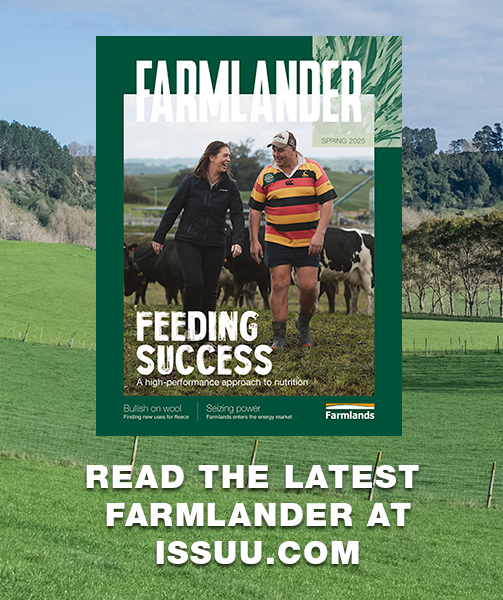
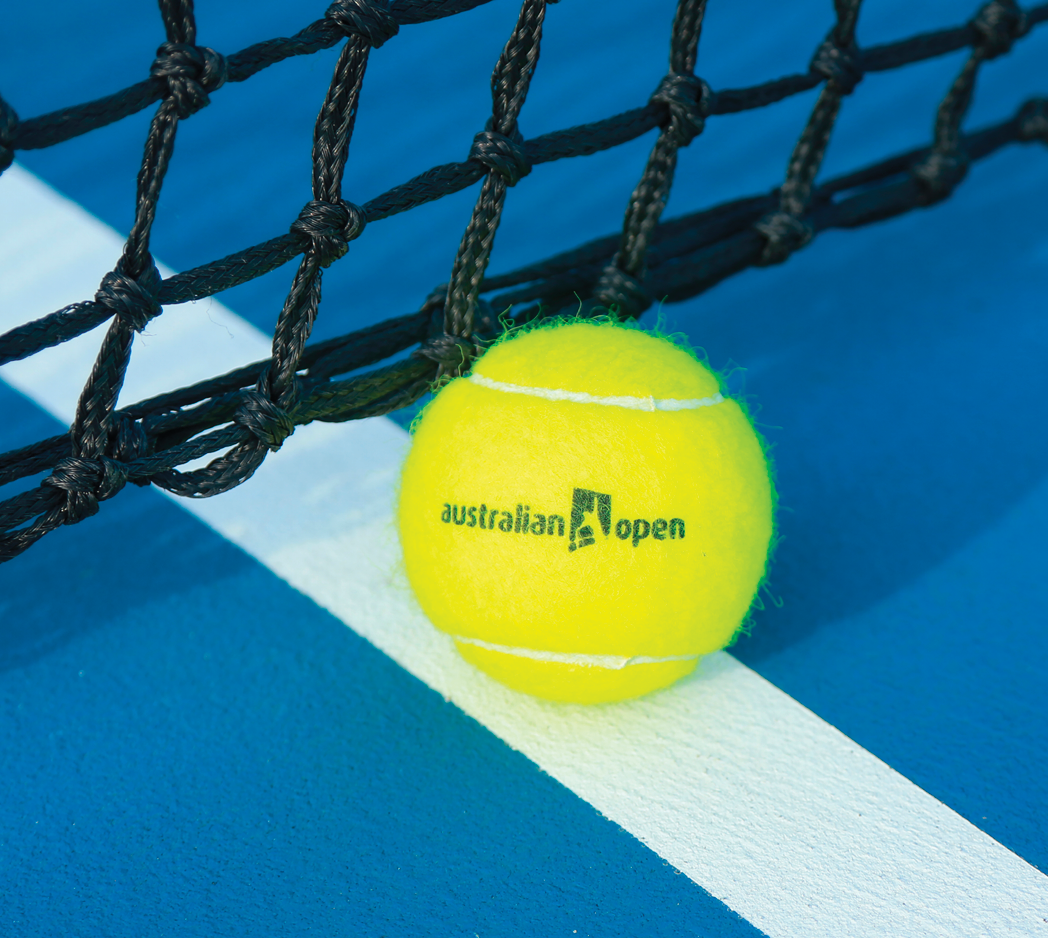
Wonderful World of Wool
Words by Niko Kloeten
The Australian Open is one of the worlds most prestigious tennis events. Did you know the balls being served at 200 plus kilometres per hour are coated with New Zealand wool processed in Hawke's Bay!
Tennis balls are among the growing list of uses for wool processed by WoolWorks, the world’s largest wool scourer by volume, which handles about 80% of New Zealand’s wool clip. WoolWorks is a Farmlands shareholder and has three washing plants, two in Hawke s Bay (at Awatoto and Clive) and one at Washdyke in Timaru. We’ve been around since 2000, quietly restructuring the early-stage processing sector here in New Zealand to the point where we’ve right sized the industry to adapt to a lower number of sheep,” says Nigel Hales, President at WoolWorks. We really wish there was a whole bunch more sheep here, but unfortunately that’s what we’re dealing with at the moment.
While we’ve only got 23 million sheep in New Zealand, it’s still a big volume of wool; New Zealand's in the top five wool producers in the world. What's unique about New Zealand wool is that it’s highly suitable for carpets, interior textiles and a whole range of other uses, Nigel says. WoolWorks’ job is to clean that wool before it goes overseas and add some value to it. New Zealand's been very good at adding value to wool, even though we’d like to see even more value added here.
Falling volume
One of their biggest challenges is getting enough wool: the amount processed by WoolWorks has been relatively stable for the past couple of years at around 105 million kg, but this year it’s likely to be in the 90-95 million kg range, a 10% drop. Nigel says there are a number of reasons for the decrease. “There's trees, there's nude sheep, there's meat works that are composting skins with wool on them. There's farmers that don't see the value in collecting all of their wool clip, so they use some of the poorer fleeces and skirtings for mulch and weed protection under the trees. We're under pressure for volumes, there's no doubt about that.” “We realise that farmers are having a tough time at the moment; they're not getting paid enough for their wool.”
WoolWorks CEO Rosstan Mazey says there's a lot of work going on in the background to get a much better price for farmers’ products. Although most of the wool processed by WoolWorks is medium to strong wool, its scours are set up to wash fine wool as well. It washes about 10,000 bales of Merino wool each year, almost all from the South Island. “There's only a small portion of the global Merino supply grown in New Zealand, but what's grown here is very good. Then we've got crossbred, which ranges from 28 micron and then going up into the stronger wool with up to 40 microns,” Rosstan says. “We've adapted our equipment to be able to wash all of those types, and that's something that makes us quite different from most plants around the world. Most can either do one or the other.”

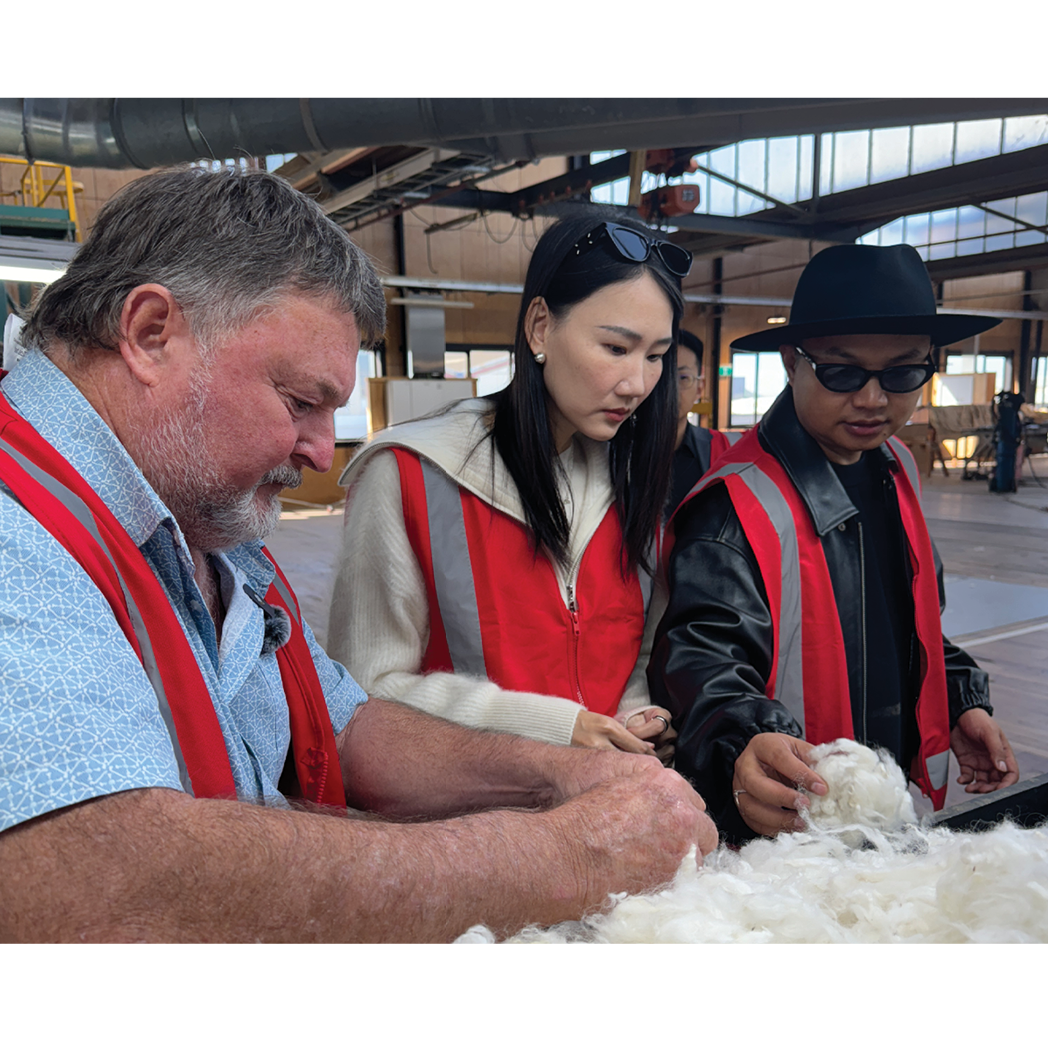
Growing range
There's a burgeoning range of products that wool is a part of, but the core product remains soft floorings, such as carpets and rugs. Rosstan says there’s a resurgence in wool carpets domestically and also in some of New Zealand’s key export markets like continental Europe and the UK, as consumers tune into the sustainability and environmental aspects of the product. “There's also no microplastics in our wool and it provides really good health and wellness benefits when you've got wool products in an interior environment. That was something that really came to the fore during the Covid era, when people largely remained indoors.” Wool is also becoming increasingly popular in bedding products, particularly in the top layers, he says.
“People now realise that wool has a superior comfort level to polyester and other synthetic products, with attributes such as thermal regulation and dynamic breathability supporting a much better sleep with wool. And it also gives you increased protection to fire. We are seeing a number of companies that are shifting now to putting wool into their bedding.” Rosstan also points to Mustang Manufacturing, a US-based maker of horse-riding gear, which uses 100% New Zealand wool for some of its products like wool blankets and saddle underlays. “Then there's a whole broad area of interior textiles like acoustic panels, which are becoming more and more commonplace, particularly in open plan office environments and large internal spaces,” he says. “They act almost as an air filter because of the properties of the fibre and also provide good thermal regulation and obviously acoustic properties. We’re also seeing growth in the building insulation market, where you have woollen batt products.”
Waxing lyrical
It’s not just the wool itself that is in demand for a range of different uses: wool wax, a by-product extracted during the washing process, provides weather protection for the sheep but is also useful for many human activities. Nigel says one of these is in music, where lanolin from wool wax can be used to tune instruments such as pianos. “We've been supplying wool wax actually to a guy who's the world's leading Yamaha piano tuner. It's so fascinating. He exclusively tunes the pianos of the likes of Elton John and Lady Gaga.”
“It’s also useful for vehicles. You could put it on your old F-Series Ford and protect it for the rest of its life and drive it through a swamp and it won't rust if it's sprayed with wool wax.” Lanolin is widely used for cosmetics including lipsticks, facial creams, shampoos and eczema treatments. Other by-products of refined wool grease include vitamin D3 and cholesterol, which Nigel says can be difficult to source elsewhere. “There's only two other sources of animal-based cholesterol and that's pig's brains and spinal cords, and you can see how that would be a problem in certain countries.”


Autex embraces wool
Autex, a New Zealand company that produces modern acoustic panels and insulation products, has unveiled a wool-based product from its groundbreaking Autex Future Lab (AFL) - a new home for research and development (R&D). Jonathan Mountfort, Creative Director at Autex, says from their inception, they’ve been driven by a commitment to leaving our planet better than we found it. “That’s why we’re so excited to unveil AFL and apply this philosophy to natural fibres, creating the blueprint for how we work in partnership with the natural world to responsibly use both biological and technical resources – something that the industry has struggled to do for a long time.”
The first innovation to emerge from AFL is Autex’s very first wool-fibre product, Embrace – an architectural surface that combines tactile warmth with all the high-performance qualities Autex is known for. In line with AFL’s philosophy, Embrace considers every part of the closed loop system to ensure it’s truly regenerative, and this includes the farming practices.

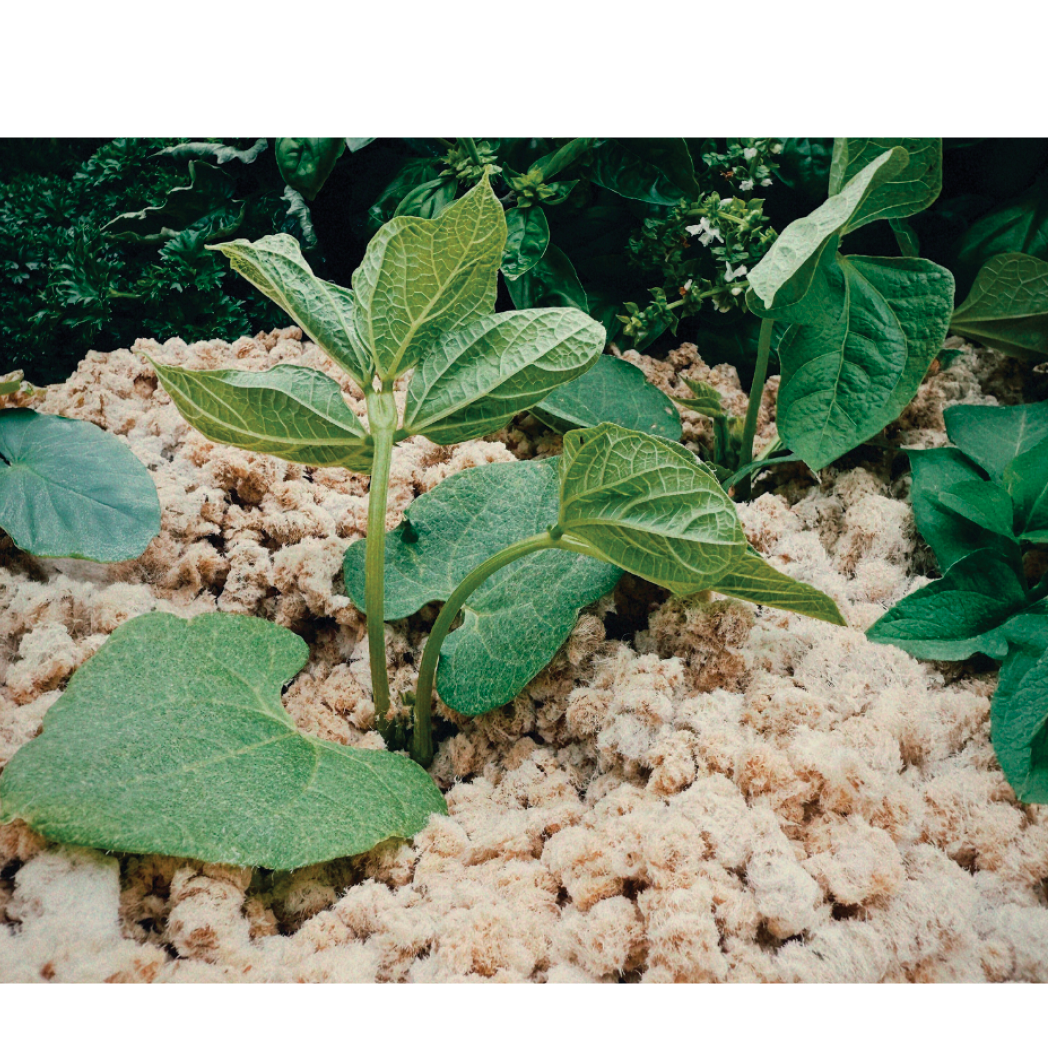
Cozy Crops
It’s not just the big industry players looking to bring innovative uses for wool to market and get better returns for farmers. Jessica and Kieran White, Farmlands shareholders based in Kio Kio (near Otorahanga), are the creators of Cozy Crops, a range of wool pellets used in the garden. The couple met while they were living in Auckland, and in 2020 they decided to leave their corporate jobs behind to go farming. “Kieran's family is all from the Waikato, and they were farming dairy cows. Kieran and his brother decided they wanted to go into sheep milking, which was new for them and pretty new for New Zealand at that stage,” Jessica says.
“We were milking sheep for five seasons here, and that's when we’discovered that the cost of shearing is quite expensive compared to what you get out of it, especially for sheep milking because those sheep are not bred to have the highest quality wool. “We ended up with this shed full of this whole clip of wool and I thought, ‘What are we going to do with it?’ We can sell it, but it's not covering the cost of anything, it's just getting rid of it essentially.”
With few other options for the wool, Jess began to spread it around in her garden, unaware of the commercial opportunity at her feet. “That's when friends and family wanted to start using it, and I quickly learned that people had been using wool in the garden for years. But I wanted to make it more user-friendly, because obviously not everybody has bales of wool in their shed.” While other companies make wool-based gardening products, Jessica says Cozy Crops has a big point of difference: not only does it help keep slugs and snails away, but it's also a fertiliser and a mulch. “Most other wool products on the market don't have the manure present because they’ve been washed and cleaned.”
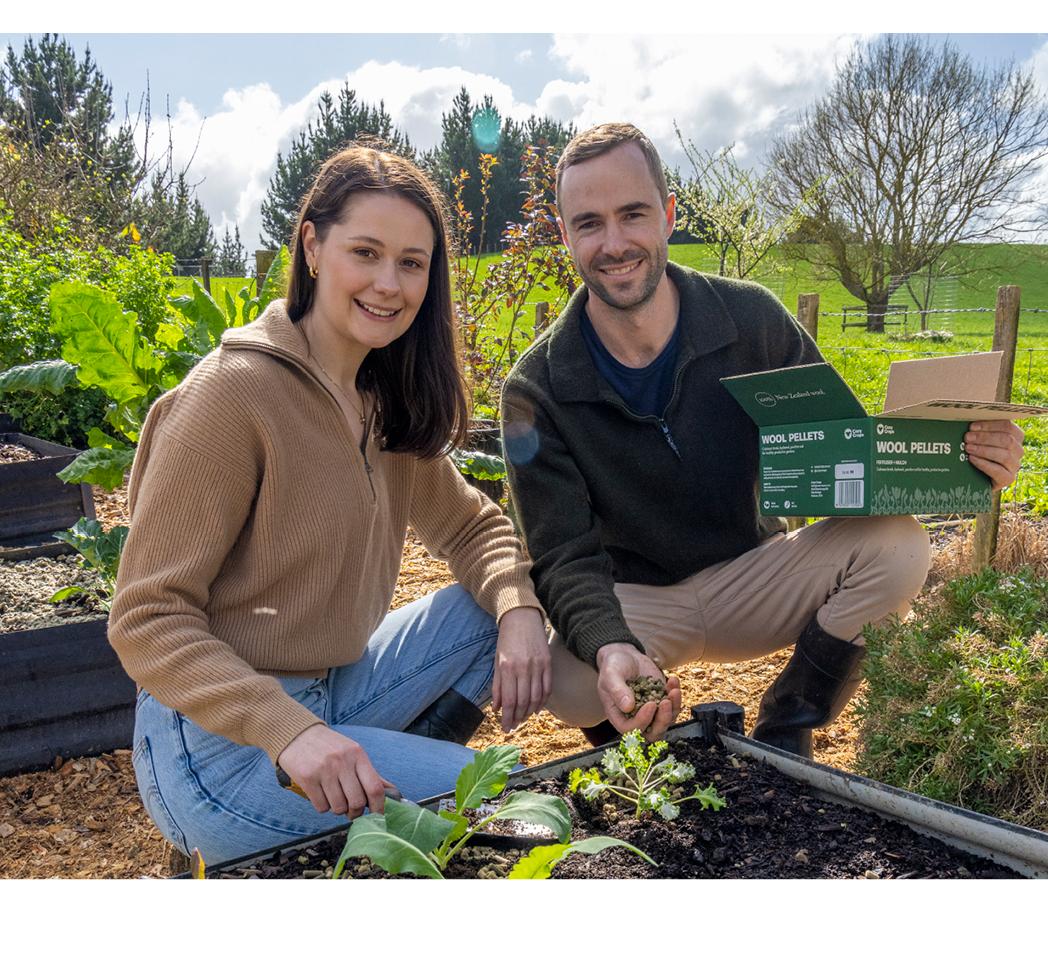
Freeing up time
Although Kieran and Jessica recently switched from sheep milking over to dairy, Cozy Crops is still going strong. In fact, Jessica says the change may be good for Cozy Crops, because it frees up more of their time to focus on the business. This is mainly due to the sheer number of animals involved: their 80ha farm runs about 250 dairy cows, as opposed to between 1,000-1,200 milking sheep. “We've just finished our first season with the cows and it's a lot easier than the sheep, a lot less intensive,” she says.
“If we still had the sheep, managing Cozy Crops on top of everything else would be questionable. There's just a lot more downtime with the cows and the size of herd that we’ve got now.” Jessica has been putting this extra time to good use developing a new product, which she is keeping under wraps for now, but is hoping to launch during spring. “We are in the late stages of product testing. It’s not currently available in New Zealand or anywhere that I've seen as a standalone product, but it’s still very much in that gardening space.”
Cozy Crops is mostly sold online, although it is available in a couple of Mitre 10 stores. While they are still working their way through the remaining wool clip from their own farm, Jessica says they have plenty of interest from local farmers in supplying them. “There's definitely not a shortage of low-quality wool that people are trying to get rid of. The whole point of Cozy Crops was to be able to pay farmers more fairly for their wool. We offer more than what your standard wool traders will offer. “You have to shear your sheep regardless of what you've got them for, whether it's meat or milk. It’s a necessary process like drenching, so it makes sense to use the wonderful by-product that is wool, to help Kiwis grow healthy, productive gardens.”

